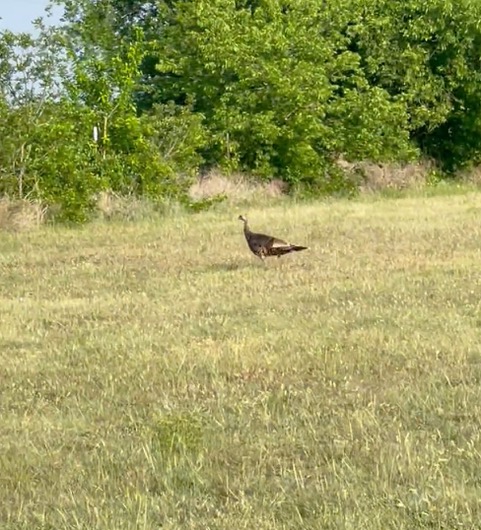“Tessie” the wild turkey hen is back to visit. She seems attracted to the donkeys and goats down by the hangar barn. Wild turkeys are known to forage along with other critters, so maybe she’s looking for cross-species companionship. Some people say turkeys will forage amongst squirrels and deer as a hedge against predation. Regardless, we’ve not yet seen her hop the fence to join the goats for protection or socializing. But Tessie has been spending time very close to them and perks up when she hears them making noise.
Speaking of noise, you’ll notice this video has no sound. That’s because I was running the diesel UTV to follow the bird and the engine is really loud. So as not to annoy our friends and viewers, we decided to edit out the sound.
Although she did not break out into a fast run, wild turkeys do have the ability to run at speeds up to 25 miles per hour. Compare that to a roadrunner whose ground speed is 26 miles per hour. That’s pretty fast for such an ungainly-looking bird! They can also fly in bursts of up to 55 miles per hour. They have no problem nesting for the evening up in the branches of trees, either.
During the daytime, they are busy searching for insects, seeds, and berries. And there on the ground is where she’ll lay her eggs. It takes about one day to produce each egg and a hen will lay between 8 to 16 of them for a full clutch. 28 days later, the little ones (called poults) start hatching. The first two weeks is crucial as the poults can’t fly yet, so mom will nest with them on the ground to protect them from predators.
Of course, we’d love to see some little poults running about. The laying season usually ends in April, so it is possible Tessie has some little ones ready to form a flock. Stay tuned!

